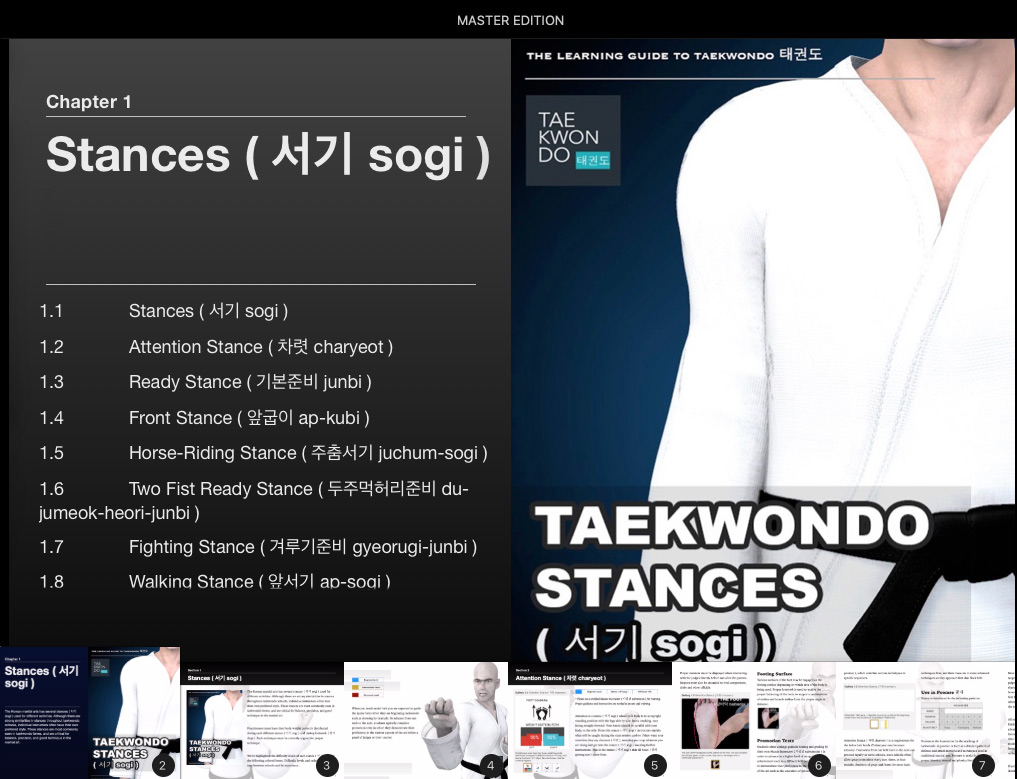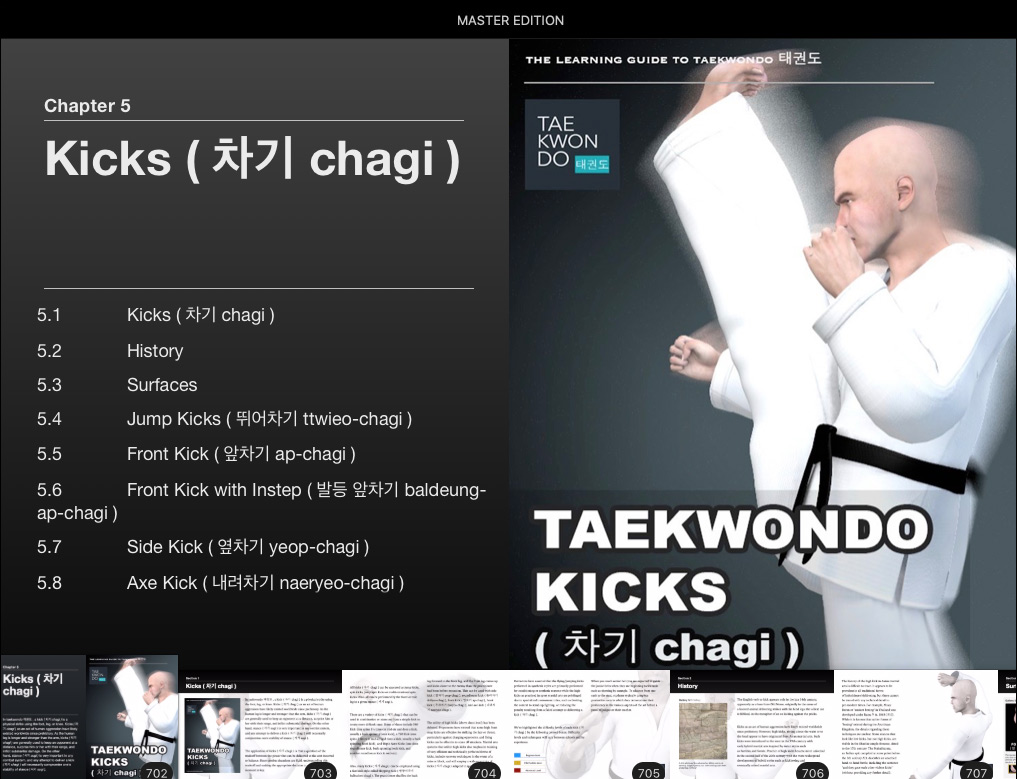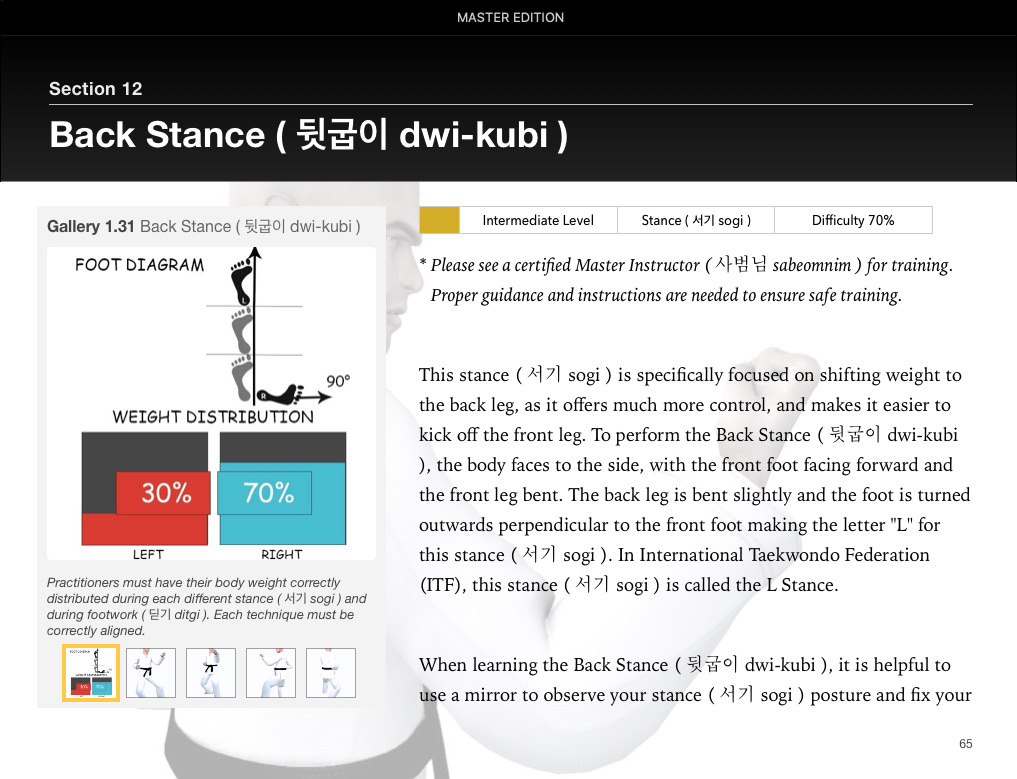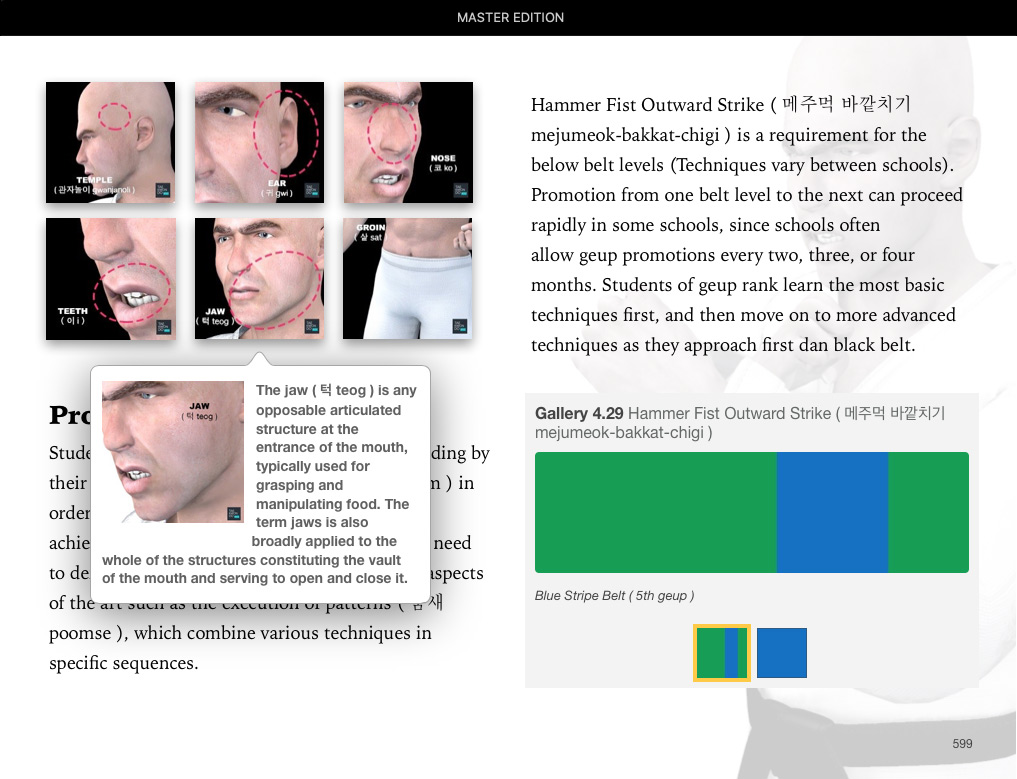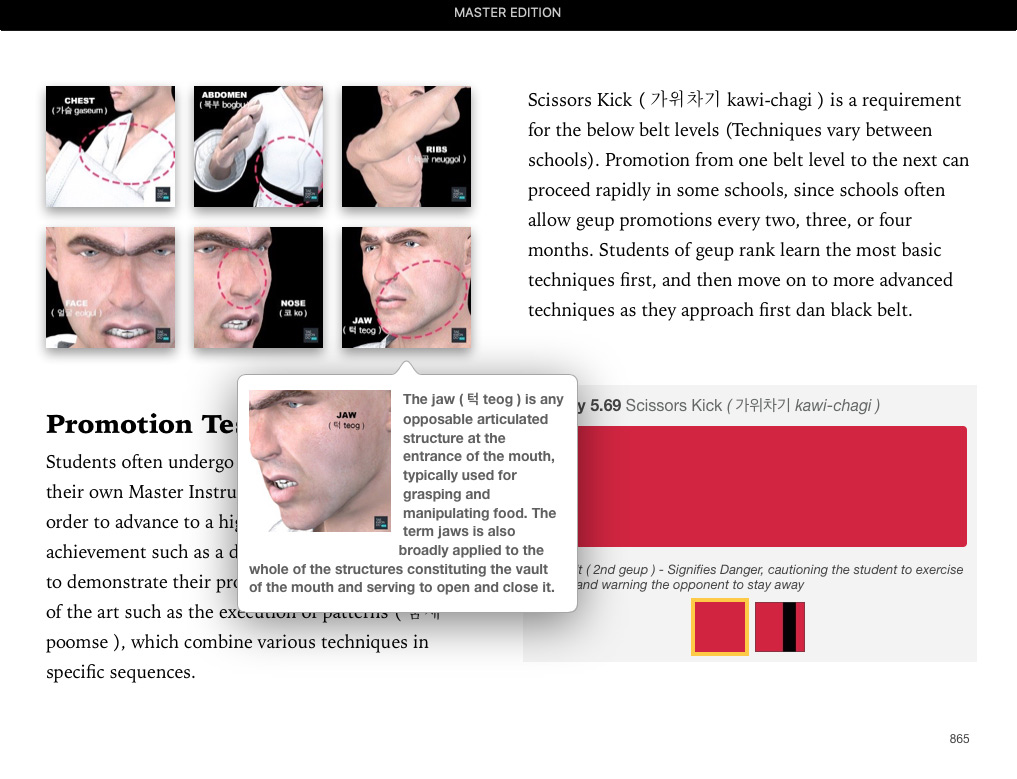Taekwondo 태권도Taekwondo Preschool
Promotion from one geup to the next can proceed rapidly in some schools, since schools often allow geup promotions every two, three, or four months. Students of geup rank learn the most basic techniques first, and then move on to more advanced techniques as they approach first dan. Many of the older and more traditional schools often take longer to allow students to test for higher ranks than newer, more contemporary schools, as they may not have the required testing intervals. View Taekwondo belt levels »

Promotion Tests | Blue Belt
Blue Belt Level Information
Meaning: "Signifies the Heaven towards which the plant matures into a towering tree as training in taekwondo progresses"
Style: World Taekwondo (WT) 
Ranking: 4th geup
Difficulty Level: Intermediate
To advance from one rank to the next, students typically complete promotion tests in which they demonstrate their proficiency in the various aspects of the art before their teacher or a panel of judges. Promotion tests vary from school to school, but may include such elements as the execution of patterns, which combine various techniques in specific sequences; the breaking of boards to demonstrate the ability to use techniques with both power and control; sparring and self-defense to demonstrate the practical application and control of techniques; physical fitness usually with push-ups and sit-ups; and answering questions on terminology, concepts, and history to demonstrate knowledge and understanding of the art. For higher dan tests, students are sometimes required to take a written test or submit a research paper in addition to taking the practical test.
Promotion from one geup to the next can proceed rapidly in some schools, since schools often allow geup promotions every two, three, or four months. Students of geup rank learn the most basic techniques first, and then move on to more advanced techniques as they approach first dan. Many of the older and more traditional schools often take longer to allow students to test for higher ranks than newer, more contemporary schools, as they may not have the required testing intervals. More information View Belt Level Ranking »
Difficulty of Promotion Test
Taekwondo students of geup ranking learn the most basic techniques first, and then move on to more advanced and difficult techniques as they approach 1st Dan Black Belt. The more difficult the techniques, the more practice may be needed for the purpose of improving or mastering it, as in the phrase 'practice makes perfect'. Every technique must display the requisite speed, balance, power and firmness to be realistically used as an attack or defense move.
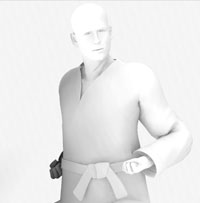
Training Safety Precautions
Overtraining can be described as a point where a person may have a decrease in performance and plateauing as a result from failure to consistently perform at a certain level or training load exceeds their recovery capacity. They cease making progress, and can even begin to lose strength and fitness. Overtraining is also known as chronic fatigue, burnout and overstress in athletes.
It is important to note the difference between overtraining and over-reaching; over-reaching is when an athlete is undergoing hard training but with adequate recovery, overtraining however, is when an athlete is undergoing hard training without the adequate recovery. View Overtraining »
* Please see a certified Master Instructor ( 사범님 sabeomnim ) for training. Proper guidance and instructions are needed to ensure safe training.
Taekwondo Promotion Tests | Blue Belt

Blue Belt Level Requirements
Style: World Taekwondo (WT) 
( Techniques vary between schools )
Blocks ( 막기 makgi )
- Pressing Block ( 눌러막기 nulleo-makgi )
- Palm Heel Pressing Block ( 바탕손 눌러막기 batangson-nulleo-makgi )
- Outside Wrist Pressing Block ( 바깥팔목 눌러막기 bakkatpalmok-nulleo-makgi )
- Outside Middle Block ( 바깥막기 momtong-bakkat-makgi )
- High Outside Block ( 올려 바깥막기 olgul-bakkat-makgi )
- Hand Blade Twisting Outward Block ( 손날 비틀어 바깥막기 sonnal-bitureo-bakkat-makgi )
- Supported Hand Blade Downward Block ( 손날 거들어 내려막기 sonnal-kodureo-naeryeo-makgi )
- Supported Hand Blade Outward Block ( 손날 거들어 바깥막기 sonnal-kodureo-makgi )
- Palm Heel Inward Block ( 바탕손 안막기 batangson-an-makgi )
- Trunk Push Low Block ( 아래 헤쳐막기 arae-hecho-makgi )
- Inward Knifehand Block ( 손날 안막기 sonnal-anmakgi )
Stance ( 서기 sogi )
- Rear Cross Stance ( 뒤 꼬아서기 dwi-koa-sogi )
- Cross Stance ( 꼬아서기 koa-sogi )
Fist Strikes ( 지르기 jireugi )
Strikes ( 치기 chigi )
- Elbow Turning Strike ( 팔굽 돌려치기 palgup-dollyeo-chigi )
- Elbow Target Strike ( 팔굽 표적치기 palgup-pyojeok-chigi )
- Elbow Rear Strike ( 팔굽 뒤치기 palgup-dwi-chigi )
- Elbow Downward Strike ( 팔굽 내려치기 palgup-naeryeo-chigi )
- Hammer Fist Strike ( 메주먹 치기 mejumeok-chigi )
- Hammer Fist Downward Strike ( 메주먹 내려치기 mejumeok-naeryeo-chigi )
- Hammer Fist Outward Strike ( 메주먹 바깥치기 mejumeok-bakkat-chigi )
- Outward Back Fist ( 등주먹 바깥치기 deung-jumeok-bakkat-chigi )
- Hand Blade Outward Strike ( 손날 바깥치기 sonnal-olgul-bakkat-chigi )
- Hand Blade Side Strike ( 손날 옆치기 sonnal-yeop-chigi )
Thrusting techniques ( 찌르기 jjireugi )
- Spearhand Vertical Thrust ( 편손끝 세워찌르기 pyeonsonkkeut-sewo-jjireugi )
- Supporting Vertical Thrust ( 거들어 세워찌르기 kodureo-sewo-jjireugi )
Kicking ( 차기 chagi )
- Spin Hook Kick ( 뒤후려차기 dwi-huryeo-chagi )
- Jumping Back (Thrust) Kick ( 뛰어 뒤차기 ttwieo-dwi-chagi )
- Jumping Turn Kick ( 뛰어 돌려차기 ttwieo-dollyeo-chagi )
- Jumping Axe Kick ( 뛰어 내려차기 ttwieo-naeryeo-chagi )
- Jumping Inward Crescent Kick ( 뛰어 안차기 ttwieo-an-chagi )
- Jumping Outward Crescent Kick ( 뛰어 바깥차기 ttwieo-bakkat-chagi )
- Alternating Kick ( 이어차기 ieo-chagi )
- Pushing Kick ( 밀어차기 mireo-chagi )
- Pushing Front Kick ( 밀어 앞차기 mireo-ap-chagi )
- Pushing Side Kick ( 밀어 옆차기 mireo-yeop-chagi )
Poomse 품새
Poomse is the foundation for the teaching of Taekwondo. A poomse, or form, is a detailed pattern of defense-and-attack motions and techniques used in traditional martial arts. Poomse is useful in developing proper kinetics, mental and physical fortitude.
Most Kukkiwon schools will use the poomse taegeuk whereas a few schools will use the poomse palgwe. The meanings, trigrams and symbols are shared by both poomse taegeuk and poomse palgwe, however the sequence of movements is different. The first 8 forms of the set of poomse differ from each other, whereas the last 9 forms (Black Belt forms) of the set are shared between the two sets. All students studying in World Taekwondo (WT) Kukkiwon style must learn these forms, or taegeuk, to advance to a higher belt level. There are eight taegeuk forms, each one similar to the previous one, but each time with more complicated techniques to display the students' mastery of the techniques learned during lessons, as well as the ability to interconnect these techniques. For more information View Taekwondo Poomse 품새 »

Taekwondo Promotion Test
Testing or evaluation is important to taekwondo practitioners who wish to determine their progression or own level of skill in specific contexts. Students within individual belt levels often undergo periodic testing and grading by their own teacher in order to advance to a higher level of recognized achievement, such as a different belt color. View Taekwondo Promotion Tests »
* Please see a certified Master Instructor ( 사범님 sabeomnim ) for training. Proper guidance and instructions are needed to ensure safe training.
There are five tenets defined in the International Taekwondo Federation (ITF) and several more in World Taekwondo (WT).
Perseverance ( 인내 in-nae ): "One will persevere time and time again until they have achieved a result which is adequate towards what one was trying to achieve." View Taekwondo Tenets »
RESOURCES
This article uses material from the Wikipedia articles "Taekwondo", "Taegeuk" and "Hyeong" which is released under the Creative Commons Attribution-Share-Alike License 3.0.




